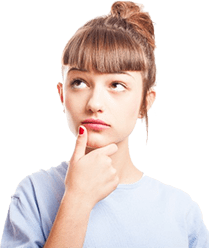Answered You can hire a professional tutor to get the answer.
Laboratory I: To download additional .arff data sets go to: http://www.hakank.org/weka/ or search the Internet for .arff files required · What's the difference between a "training set" and a "test se
Laboratory I:
To download additional .arff data sets go to:
http://www.hakank.org/weka/
or search the Internet for .arff files required
· What's the difference between a "training set" and a "test set"?
· Why might a pruned decision tree that doesn't fit the data so well be better than an un-pruned one?
· What's the first thing that 1R does when making a rule based on a numeric attribute?
· How does 1R avoid overfitting when making a rule based on an enumerated and/or numeric attribute?
· What is the difference between Attribute, Instance and Training set?
- What is the difference between ID3 and C4.5?
- Use the following learning schemes to analyze the iris data (in iris.arff):
OneR
- weka.classifiers.OneR
Decision table
- weka.classifiers.DecisionTable -R
C4.5
- weka.classifiers.j48.J48
· Do the decisions made by the classifiers make sense to you? Why?
· What can you say about the accuracy of these classifiers? When classifying iris that has not been used for training?
· How did each one of the methods perform?
- Use the following learning schemes to analyze the bolts data (bolts.arff without the TIME attribute):
Decision Tree
- weka.classifiers.j48.J48
Decision table
- weka.classifiers.DecisionTable -R
Linear regression
- weka.classifiers.LinearRegression
M5'
- weka.classifiers.M5'
· The dataset describes the time needed by a machine to produce and count 20 bolts. (More details can be found in the file containing the dataset.)
· Analyze the data. What adjustments have the greatest effect on the time to count 20 bolts?
· According to each classifier, how would you adjust the machine to get the shortest time to count 20 bolts?
- Produce a model for both Weather and Weather.nominal data sets. Which method(s) did you use? What did the tree(s) look like?
Laboratory II:
To download additional .arff data sets go to:
weka data folder for
BreastTumor.arff
http://www.hakank.org/weka/
zoo.arff, wine.arff, bodyfat.arff, sleep.arff, pollution.arff
- Use the following learning schemes to analyze the zoo data (in zoo.arff):
OneR
- weka.classifiers.OneR
Decision table
- weka.classifiers.DecisionTable -R
C4.5
- weka.classifiers.j48.J48
K-means
- weka.clusterers.SimpleKMeans
Try using reduced error pruning for the C4.5. Did it change the produced model? Why?
For K-means, for the first run, set k=10. Adjust as needed. What was the final number of k? Why?
- Use the following learning schemes to analyze the breast tumor data.
Linear regression
- weka.classifiers.LinearRegression
M5'
- weka.classifiers.M5'
Regression Tree
- weka.classifiers.M5'
K-means clustering
- weka.clusterers.SimpleKMeans
A) How many leaves did the Model tree produce? Regression Tree? What happens if you change the pruning factor?
How many clusters did you choose for the K-means method? Was that a good choice? Did you try a different value for k?
B) Now perform the same analysis on the bodyfat.arff data set.
- Use a k-means clustering technique to analyze the iris data set. What did you set the k value to be? Try several different values. What was the random seed value? Experiment with different random seed values. How did changing of these values influence the produced models?
- Produce a hierarchical clustering (COBWEB) model for iris data. How many clusters did it produce? Why? Does it make sense? What did you expect?
Change the acuity and cutoff parameters in order to produce a model similar to the one obtained in the book. Use the classes to cluster evaluation – what does that tell you?
Laboratory III:
To download additional .arff data sets go to:
http://www.hakank.org/weka/
zoo.arff, wine.arff, soybean.arff, zoo2_x.arff,
sunburn.arff, disease.arff
8. Use the following learning schemes to compare the training set and 10-fold stratified cross-validation scores of the disease data (in disease.arff):
Decision table
- weka.classifiers.DecisionTable -R
C4.5
- weka.classifiers.j48.J48
Id3
- weka.clusterers.Id3
A) What does the training set evaluation score tell you?
B) What does the cross-validation score evaluate?
C) Which one of these models would you say is the best? Why?
9. Use the following learning schemes to analyze the wine data (in wine.arff).
C4.5
- weka.classifiers.j48.J48
Decision List
- weka. classifiers.PART
A) What is the most important descriptor (attribute) in wine.arff?
B) How well were these two schemas able to learn the patterns in the dataset? How would you quantify your answer?
C) Compare the training set and 10-fold cross-validations scores of the two schemas.
D) Would you trust these two models? Did they really learn what is important for proper classification of wine?
E) Which one would you trust more, even if just very slightly?
10. Perform the same analysis of sunburn.arff as in 2. Instead of 10-fold cross-validations use 5-fold.
A)-E) Same as in 2.
F) Why could not we use 10-fold evaluation in this example?
11. Choose one of the following three files: soybean.arff, zoo.arff or zoo2_x.arff and use any two schemas of your choice to build and compare the models.
